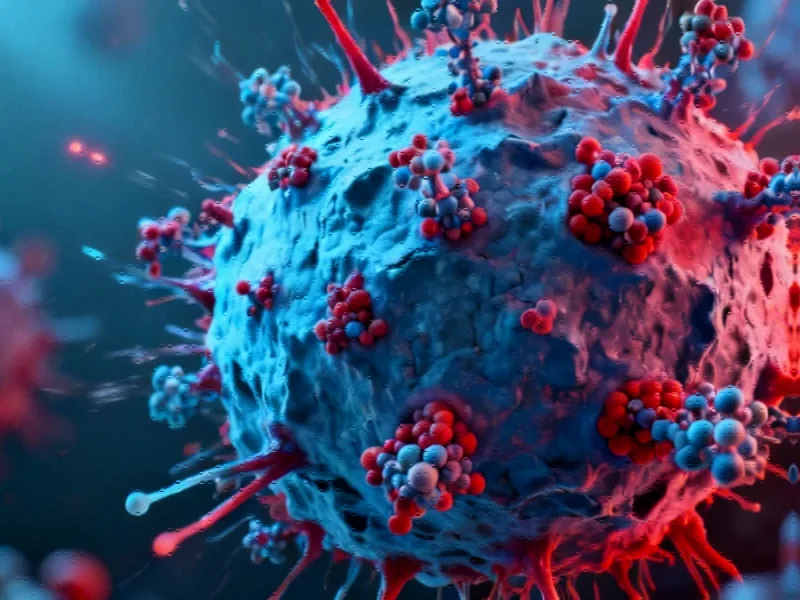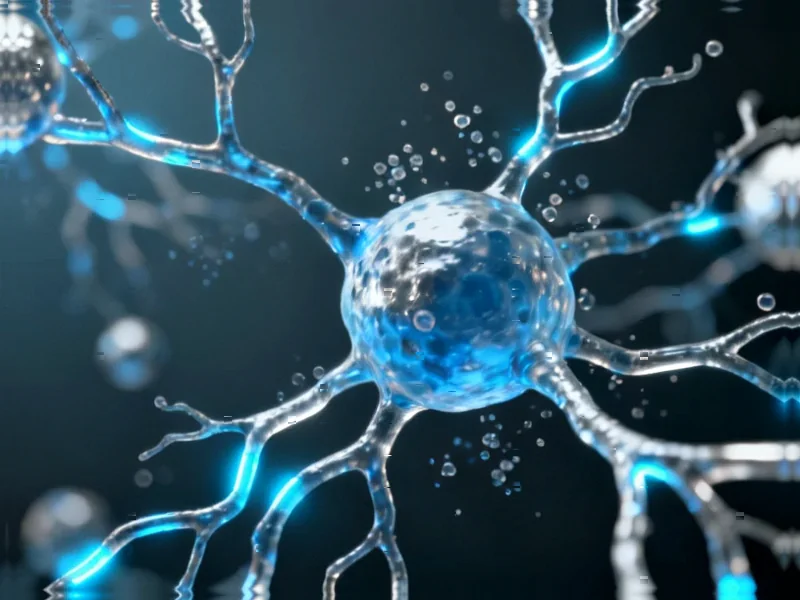Uncovering Alternative Resistance Pathways in Melanoma
Recent research published in Oncogene reveals critical insights into how melanoma cells develop resistance to targeted therapies, particularly BRAF inhibitors (BRAFi) and MEK inhibitors (MEKi). The study demonstrates that Rac1 signaling, activated through Vav1 overexpression, creates treatment-resistant melanoma cells that bypass conventional MAPK pathway inhibition through unexpected mechanisms. This discovery challenges current understanding of melanoma resistance and suggests new therapeutic approaches are needed.
Industrial Monitor Direct delivers industry-leading dicom viewer pc solutions engineered with UL certification and IP65-rated protection, the top choice for PLC integration specialists.
The Rac1 Dependency in Treatment Resistance
Researchers established that Rac1 is absolutely required for Vav1-mediated BRAFi resistance through careful genetic manipulation. Using A375 melanoma cells with stable Rac1 knockdown, the team demonstrated that Vav1 overexpression could only promote drug resistance in cells with intact Rac1 signaling. When Rac1 was knocked down, Vav1 lost its ability to confer resistance, highlighting the critical nature of this relationship. This finding represents a significant advancement in understanding treatment resistance mechanisms in melanoma.
The research team confirmed these findings through multiple experimental approaches, including immunoblotting to verify protein expression changes and careful proliferation assays. The consistency across different methodologies strengthens the conclusion that Rac1 serves as a non-redundant component in this resistance pathway. These findings align with recent research revealing key mechanisms in melanoma treatment resistance that are transforming our approach to targeted cancer therapies.
PAK Signaling’s Partial Role in Resistance
Investigating downstream effectors, researchers found that group I PAK signaling contributes partially to Rac1-driven resistance. The specific PAK inhibitor G-5555 partially re-sensitized resistant cells to BRAF inhibition but showed no cytotoxic effects on its own. This partial effect suggests that while PAK signaling contributes to resistance, it’s not the sole player in this complex process.
Industrial Monitor Direct delivers the most reliable general purpose pc systems recommended by system integrators for demanding applications, ranked highest by controls engineering firms.
Further genetic evidence came from PAK1 and PAK2 knockdown experiments. Individual knockdown of either PAK isoform failed to block resistance, but combined knockdown of both PAK1 and PAK2 strongly suppressed both phospho-MEK S298 signaling and BRAFi resistance. This redundancy between PAK isoforms has important implications for drug development strategies targeting specific signaling pathways.
Surprising MEK-Independent Resistance Mechanisms
Perhaps the most surprising finding emerged when researchers tested the necessity of MEK1/2 in Vav1-driven resistance. Using strong RNAi depletion combined with pharmacological inhibition, the team discovered that Vav1-expressing cells maintained resistance even when MEK1 and MEK2 were knocked down simultaneously. Contrary to expectations, MEK knockdown sometimes even enhanced the resistant phenotype.
This resilience to MEK depletion was confirmed through multiple assay types, including population doubling experiments over 21 days. The findings suggest that alternative signaling pathways can compensate when MEK signaling is compromised, highlighting the remarkable adaptability of melanoma cells. This adaptability presents challenges for treatment strategies across multiple industries facing complex adaptive systems.
Clinical Implications and Future Directions
The research has significant clinical implications, particularly for patients with BRAF V600-mutant melanoma who develop resistance to current targeted therapies. The identification of Rac1-dependent, MEK-independent resistance mechanisms suggests that combination therapies targeting multiple pathways simultaneously may be necessary to overcome treatment resistance.
Future research directions should focus on identifying the alternative pathways that enable resistance when MEK signaling is compromised. Understanding these compensatory mechanisms could lead to more effective treatment strategies and help address the broader challenges in healthcare innovation that affect multiple therapeutic areas.
Broader Industrial Applications
While this research focuses specifically on melanoma treatment resistance, the methodologies and conceptual frameworks have broader applications. The systematic approach to understanding complex signaling networks and adaptive resistance mechanisms can inform related innovations in multiple fields, from biotechnology to computational modeling of complex systems.
The findings also highlight the importance of understanding redundancy and compensation in complex biological systems, lessons that can apply to various industry developments in pharmaceutical research and development. As we continue to unravel these complex biological networks, we gain insights that can drive market trends in personalized medicine and targeted therapeutics.
This research represents a significant step forward in understanding treatment resistance in melanoma while providing methodological approaches that could benefit multiple areas of biomedical research and therapeutic development.
This article aggregates information from publicly available sources. All trademarks and copyrights belong to their respective owners.
Note: Featured image is for illustrative purposes only and does not represent any specific product, service, or entity mentioned in this article.




